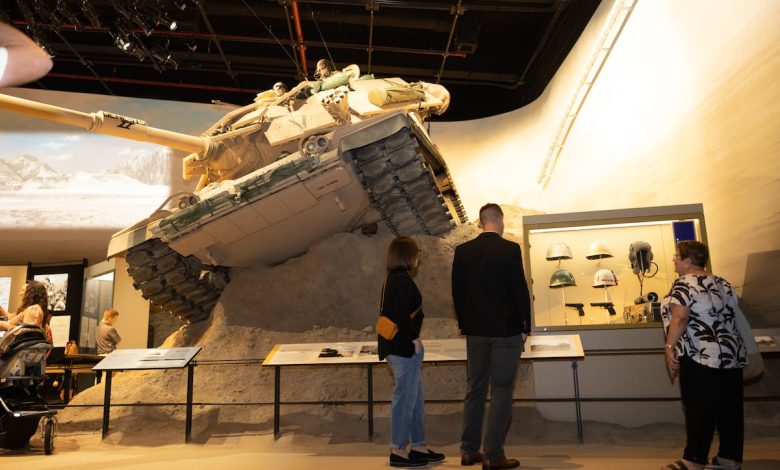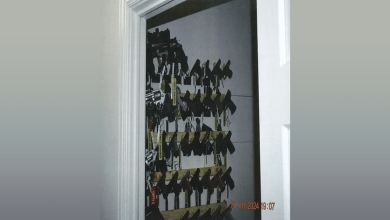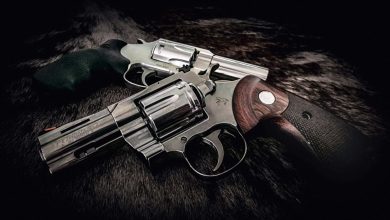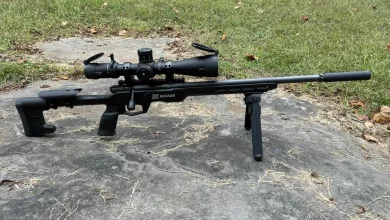New Marine Corps Museum galleries showcase Iraq, Afghanistan and more

QUANTICO, Va. – Former Marine Corps Staff Sgt. David McGrath hadn’t seen the vehicle he was blown up in years ago in Afghanistan until a recent Sunday at the National Museum of the Marine Corps.
But here he stood next to the Mine-Resistant Ambush-Protected All-Terrain Vehicle that saved his life in Helmand Province.
The blast threw his turret gunner from the vehicle, ruptured everyone’s ear drums and gave them bloody noses. But everyone made it through.
“I remember it being an audible pop and seeing smoke everywhere,” McGrath recalled. “My first thought was, ‘this is gonna be hard on my kids.’”
McGrath last saw the vehicle when it was being stripped of gear to be hauled off the battlefield.
The details are exceptional, he said, but they’ll never capture that experience endured by thousands of Marines in Iraq and Afghanistan earlier this century.
There’s no hot oil pouring from under the vehicle, no clouds of “moon dust” filling the air.
“The violence of action that happens in a combat environment is not easily replicated,” McGrath said.
The Afghanistan section of the museum is part of 20,000 square feet of new galleries opened to the public recently, highlighting Corps history from the post-Vietnam era to today.
Its galleries are filled with the uniforms of fallen Marines, other personal effects and mannequins reenacting harrowing moments that were modeled and molded off real Marines, museum director and retired Marine colonel Keil Gentry told Marine Corps Times.
“These galleries pick up the story after Vietnam,” Gentry said. “Every artifact tells a story, otherwise it would not be here.”
And while the museum’s new galleries can never fully recreate the downrange experience, the Iraq gallery in particular seeks to put visitors on the ground there.
With a warning before visitors enter an Iraqi village, a “scent cannon” greets them, reminding Marines of the smells of burning garbage, plastic and cordite that characterized the scent of deployment for many of them, Gentry said.
The museum opened in 2006 and originally featured the history of the service from its inception in 1775 through the Vietnam War.
Saje Mrowinski, a Marine veteran who served on a Female Engagement Team during her Afghanistan deployment, told Marine Corps Times that one of the exhibits that brings back memories involves a Marine commander and his team meeting with a local village elder for a shura.
The shura was a meeting between leaders in the Afghan community and a common experience for many U.S. veterans of the war.
From the sweat on the back of the commander to the tiny teacups shown on the display, the visual reminded Mrowinski of her own experiences talking with female Afghans during such meetings.
Todd South has written about crime, courts, government and the military for multiple publications since 2004 and was named a 2014 Pulitzer finalist for a co-written project on witness intimidation. Todd is a Marine veteran of the Iraq War.
Read the full article here






